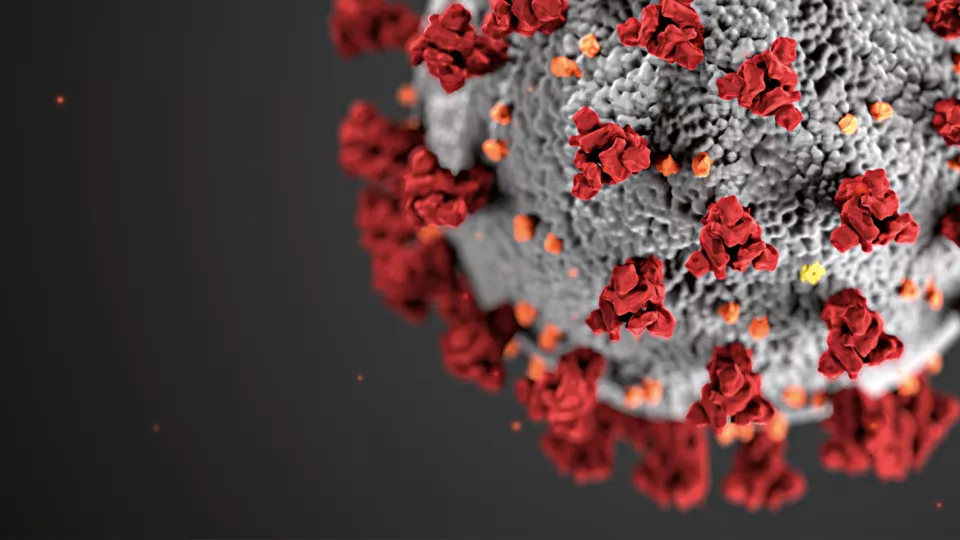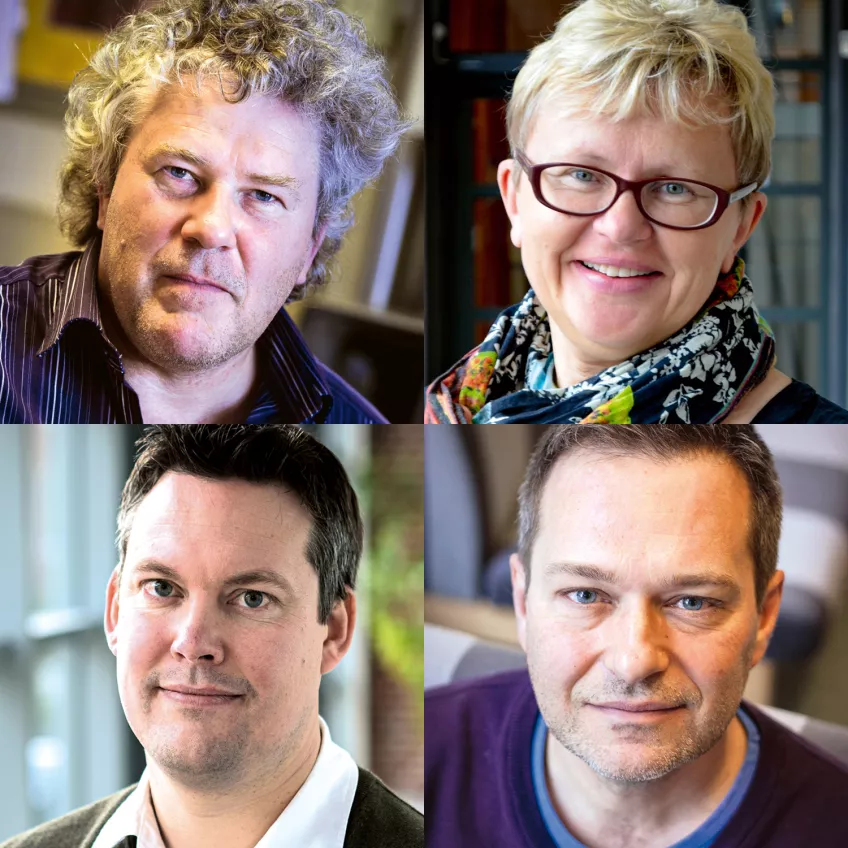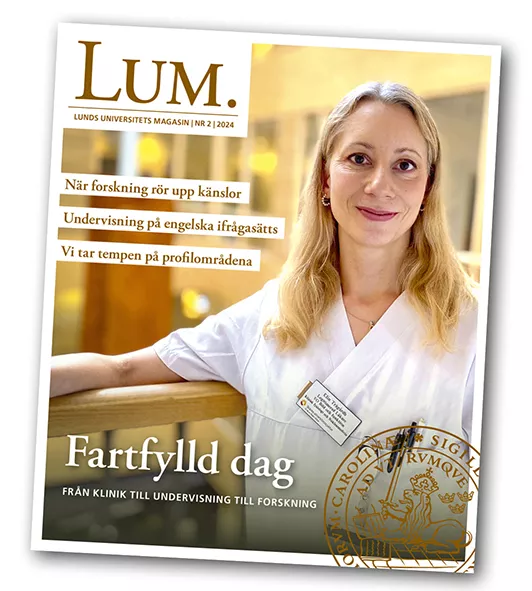Viruses are small, difficult-to-research microorganisms that are not easily controlled. Nevertheless, Stefan Schwartz says there are great opportunities.
“We could develop vaccines and antiviral drugs against the common cold virus, the winter vomiting disease, RSV and other viral infections”, says Stefan Schwartz, professor of medical microbiology.
“Viruses are strange infectious agents – it is hard to decide if they should be considered dead or alive. They are a kind of parasite that cannot be cultivated without host cells that they infect and are therefore very difficult to study”, says Stefan Schwartz.
Throughout evolution, we have been exposed to different viruses and some have remained in our genome, without making us sick. Animals also carry a number of viruses. However, if the viruses are transmitted from animals to humans, they can cause serious symptoms. This is what has happened in a number of different epidemics around the world in recent years.
”The Ebola virus, and possibly the novel coronavirus, originated in bats, HIV comes from monkeys and the Zika virus spreads from monkeys to humans via mosquitoes”, says Marianne Jansson, associate professor in virology.
Taming viruses
Viruses are also the cause of several forms of cancer. For example, hepatitis B and C infections are strongly linked to liver cancer and the human papillomavirus (HPV) can lead to cervical cancer, among others. This has led to the current vaccinations of all school-aged girls against HPV.
“However, the clever thing about viruses is that they display so-called tropism – that is, they have become specialised in infecting certain types of cells. The wart virus likes skin cells, the coronavirus likes cells in the respiratory tracts and the herpes virus is able to infect nerve cells”, explains Stefan Schwartz.
Viral tropism is something that is used in gene therapy against, for example, cancer – an area in which research is making great strides. Consequently, researchers can customise viruses that infect and kill cancer cells.
Viral pandemics on the increase
Viral pandemics, that is viral epidemics that spread to many countries around the world, have become increasingly common. The viral pandemic that perhaps took the most lives in human history was the Spanish flu. It was caused by an unusually difficult and deadly influenza virus that spread across the world in 1918 and took over 50 million lives. Why so many people died of this particular influenza is still unknown.
However, what is known is that, around the world, viral epidemics are on the increase. On the one hand, this is due to our pillaging of rainforests and thereby increasing interfaces between animals and humans. On the other hand, it is due to global warming, which results in an increase in the prevalence of mosquitos – with mosquitoes being significant carriers of viral infections. In addition, we are travelling more and there are increasingly more humans on the surface of the Earth. All of these changes favour the spread of viruses and that is why we can expect more and more pandemics in the future.
”However we are also living at a time in which research has an incredible number of technical tools at its disposal. As early as a couple of weeks after the outbreak of the coronavirus, we knew which type of virus it was that was causing the disease, we were able to provide the correct diagnosis and plan for measures to limit the spread of infection”, says Stefan Schwartz.
Studying the differences between benign and deadly influenza viruses is one of his research areas:“If we understand which factors make a virus particularly dangerous, it assists the infectious diseases authorities to act quickly to limit the spread of a virus. Exactly what we are seeing now is the Chinese authorities working intensively to limit the spread of the coronavirus. How pathogenic it is and how efficiently it spreads between humans are key questions.”
More research and education
A vaccine works by introducing an infectious agent into the body in an attenuated or inactivated form, which leads to the generation of a protective immunological memory – for example, antibodies that are specific to the infectious agent. This means that the next time equivalent infectious agents infect us, our immune system protects us so that we do not get sick. Unfortunately, it is extremely difficult to produce vaccines and drugs against viruses. However, a few viral diseases have been successfully controlled with vaccines, such as smallpox and polio. However, the influenza virus is a harder nut to crack for researchers as it constantly changes its genome. Therefore, a new vaccine must be produced each year that is adapted to the season’s novel influenza virus.
”It is not unusual for a virus to mutate and to do so quickly. This means that the body does not recognise the changed virus, which leads to the immune system finding it difficult to build up protection against recurring, seasonal viral infections”, says Marianne Jansson.
It is even worse with HIV, for which researchers are yet to successfully produce a vaccine. That is why more research is required on HIV and the mechanisms used by the virus to stay one step ahead and evade the immune system.
It is also problematic to produce new antiviral drugs because the drugs affect the host cells as well, not only the virus. Current medicines against incurable infections such as HIV can slow down the development of the disease; however, as the patient must take life-long medication it is costly, for both the individual and society. There is also a risk of resistant viruses emerging, which is why medicines must be constantly developed.
“When it comes to HIV infection, up to three different antiviral drugs are required for a broad attack against the virus, thereby preventing the virus from becoming resistant. What is positive is that current HIV drugs have led to patients not getting sick with AIDS or being at risk of infecting another person”, says Marianne Jansson.
However, currently there are only a limited number of drugs against viral infections. Many virologists say that a collective Swedish research initiative with the support of public and private funding is required to increase our understanding of how viruses cause disease and to develop antiviral drugs and vaccines. The research needs to be broad and long-term to be able to deliver antiviral drugs and vaccines when new outbreaks of viruses emerge in the future. It is equally important to educate biomedical experts, doctors and nurses in the field of virology, to be well prepared for future challenges.
“It could change the world if we were able to develop vaccines and broad-spectrum antiviral drugs. Just as there are antibiotics against bacteria, we need more antiviral drugs. The authorities have difficulties in seeing the advantages with long-term research initiatives – however, as virologists, we believe it will repay itself if we invest in the longer term”, concludes Stefan Schwartz.




